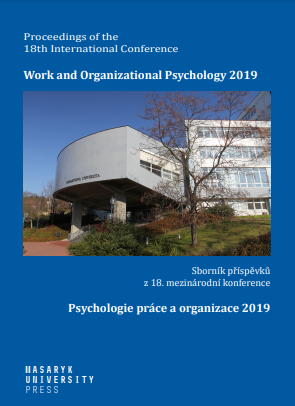Engagement in actions beyond basic professional duties – measurement and correlates
Engagement in actions beyond basic professional duties – measurement and correlates
Author(s): Agnieszka Bożek, Diana Malinowska, Aleksandra Tokarz
Subject(s): Psychology, Organizational Psychology, Human Resources in Economy
Published by: Masarykova univerzita nakladatelství
Keywords: engagement in action; beyond-duties engagement; work engagement; UWES questionnaire;
Summary/Abstract: Objective. The main purpose of the paper was to present the construct of engagement in actions beyond basic professional duties (shortly: beyond-duties engagement) and its measurement with the modified version of the UWES-9 questionnaire. An additional goal was to find differences in this type of employee engagement depending on personal variables, and the relationship between it and feedback from others, organizational commitment and burnout. Methods. A preliminary study was conducted within 61 employees (77% of men) of a mediumsized company in the automatics-robotics industry. In the main study 137 employees (60% of women) of private and state-owned enterprises of various industries with minimum 2 years work experience in one company took part. In the second study the Feedback scale from the Work Design Questionnaire, Organizational Commitment Scale, and Oldenburg Burnout Inventory were used. Results. It was found that the modified UWES-9 questionnaire to measure beyond-duties engagement is a one-factor, reliable and theoretically valid measure. The higher level of engagement in actions in leadership positions was established, as well as its positive relationship with feedback from others and organizational commitment, and negative relationship with burnout. Conclusions. Engagement in actions beyond basic professional duties is a homogenous construct, linked to positive aspects of work. Every employee may engage in additional activities, although working as a manager may be conducive to greater beyond-duties engagement. Limitations. There was rather small, inhomogeneous group in the main study, in both studies only self-description methods were used.
Book: Work and Organizational Psychology 2019
- Page Range: 22-33
- Page Count: 12
- Publication Year: 2019
- Language: English
- Content File-PDF

